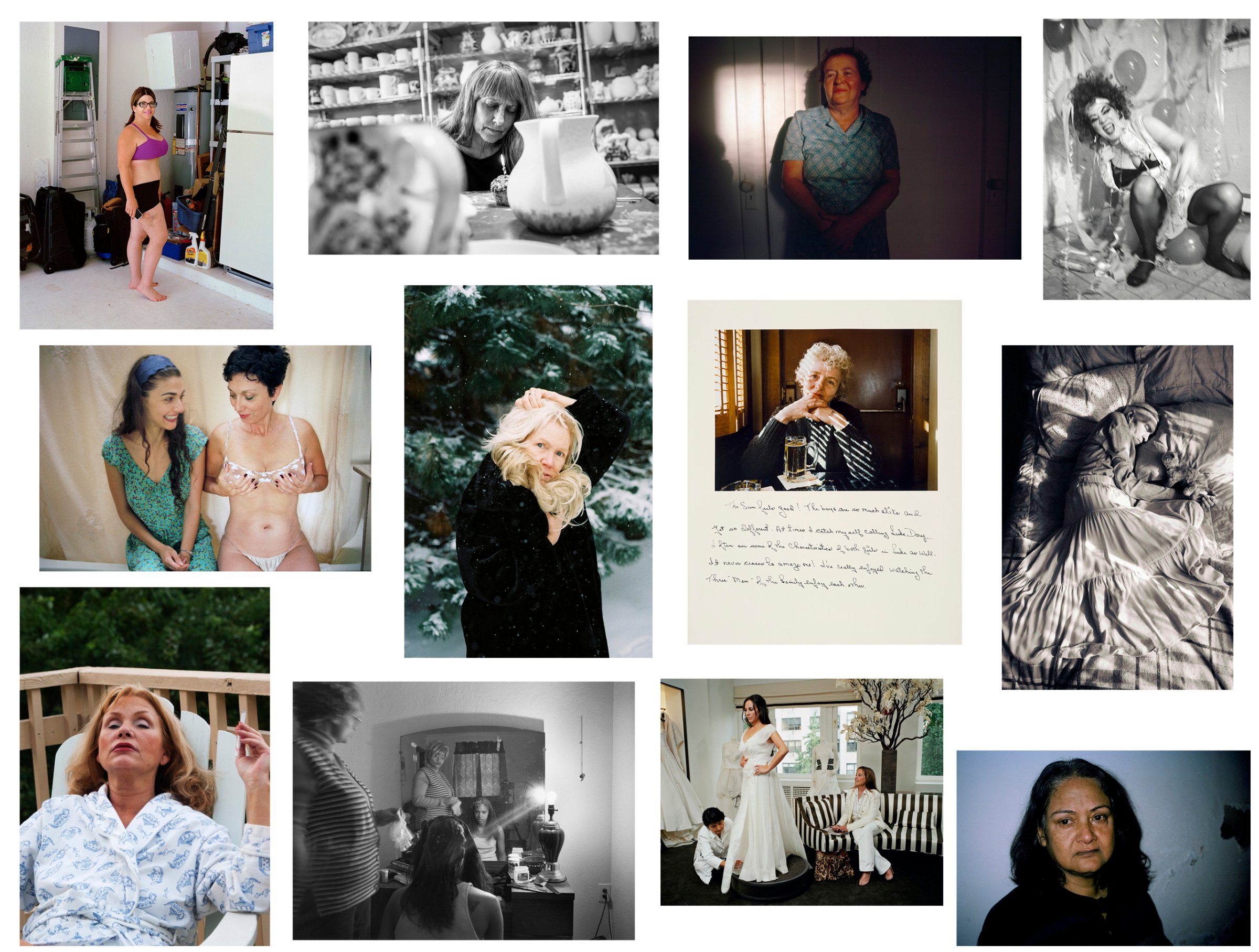
“Mother’s day (and Father’s day) carry a strange weight with them,” says photographer Nancy Borowick, a photojournalist that documented both of her parents’ fatal battles with cancer. “I feel both their absence but also their love and it’s not like I only think about them on those days. I feel those things everyday.”
The first Mother’s Day was held in the U.S. in 1908 when Anna Jarvis established the celebration as a way to honor her mother’s passing. The tradition quickly caught on, becoming an official U.S. holiday in 1914 under President Woodrow Wilson. When the celebration started to turn commercial, Jarvis spent her last years lobbying the government to have Mother’s Day removed from the calendar. She was unsuccessful and died in 1948.
Regardless of its history its still a day spent honoring the women who brought us into the world. TIME asked 12 photographers who’ve dedicated themselves to making extensive work about their families to reflect on their experiences with their mothers—and to describe which of their own photographs moved them most.
Mom Relaxing My Hair, 2005 from the series The Notion of Family by LaToya Ruby Frazier
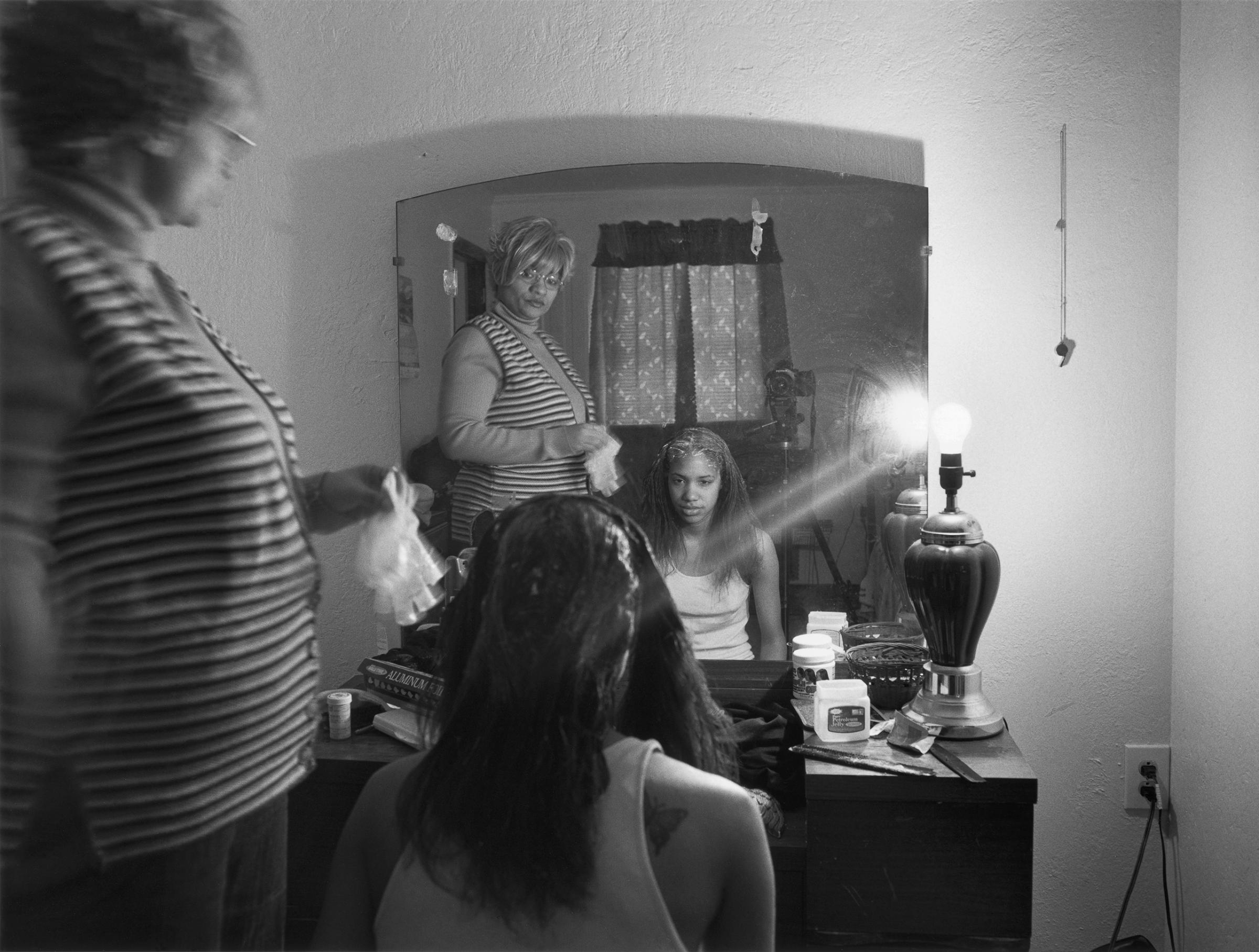
This photography is a special portrait for me, which my mother created as my collaborator documenting mommy/daughter time as she styled my hair on a Sunday afternoon. It is a rare moment in The Notion of Family series where often my mother and I were dealing with healthcare inequality and environmental racism. This particular moment symbolizes our bond and unconditional love regardless of circumstances. Through the process of working with my mother, creating both intimate and vulnerable images together, taught me about courage, beauty, strength and honor.
My Mother and I, 2002 by Elinor Carucci
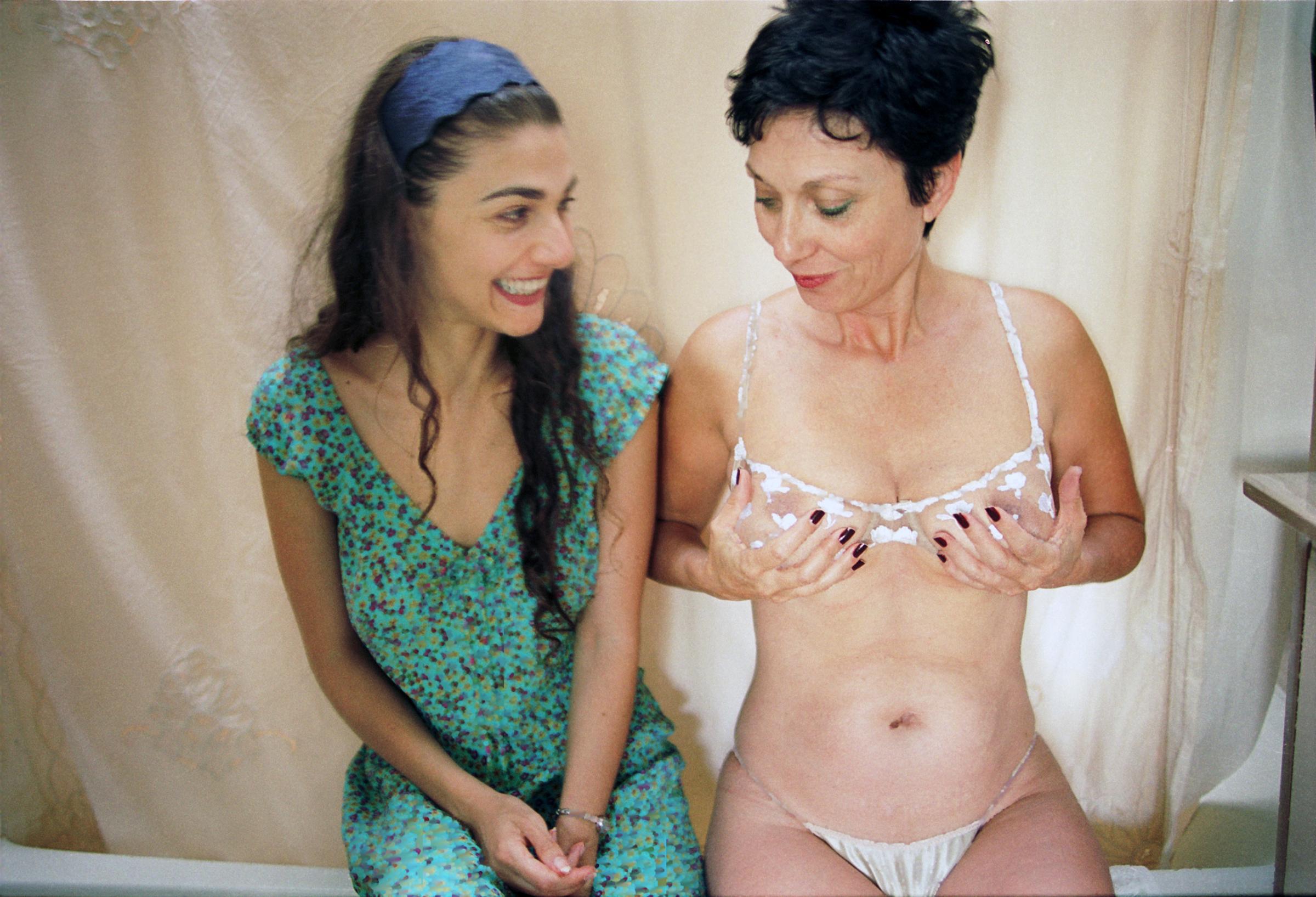
Over the years I get ‘used’ to many of my images, not to this one. I always smile when I see it; my heart fills with love and warmth. In it, I see the sheer comfort of having a mother in this world. It makes being in this world possible, bearable, even wonderful.
Mother is the only form of unconditional love. Mother is knowing you are protected, guarded, you are never alone, she is always there. Mother is always being able to go back to being a child. In all aspects of my life, I am a woman, a mother, a wife, an adult. But I can still be a child as long as my mom is around.
I love this photograph of her and I, because I see it all there. This was in the midst of a crisis in my life, but with my mom there with me, telling me about ‘what men want’ in her humorous and theatrical way, being provocative and funny as she often can be, I could let myself go in this safe haven of being my mom’s child. And as we laughed, the problems and pains were forgotten and it all seemed like it would be all right. Looking at this picture, and at me sitting by her side, I even look younger than my 31 years, the age I was when I took this picture. With my camera and self-timer and under her wing, it’s almost like I traveled back in time.
I love my mom so much. She is everything to me. My inspiration and muse, my guardian angel, the woman who raised me and who demanded me, sometimes harshly, to be the best that I could be, the woman who I admired yet sometimes hated, and feared at other times, and fought with, and accepted, and rebelled against, and accepted again. The woman who always loved me.
And in those times, like the one in this photograph, we are connected, like we were when I was 12, and 16, and 25, like we do today when I am 44, I let her be my funny mom, I let myself surrender. And everything is ok.
Untitled (First Snow), from the series Mom by Charlie Engman
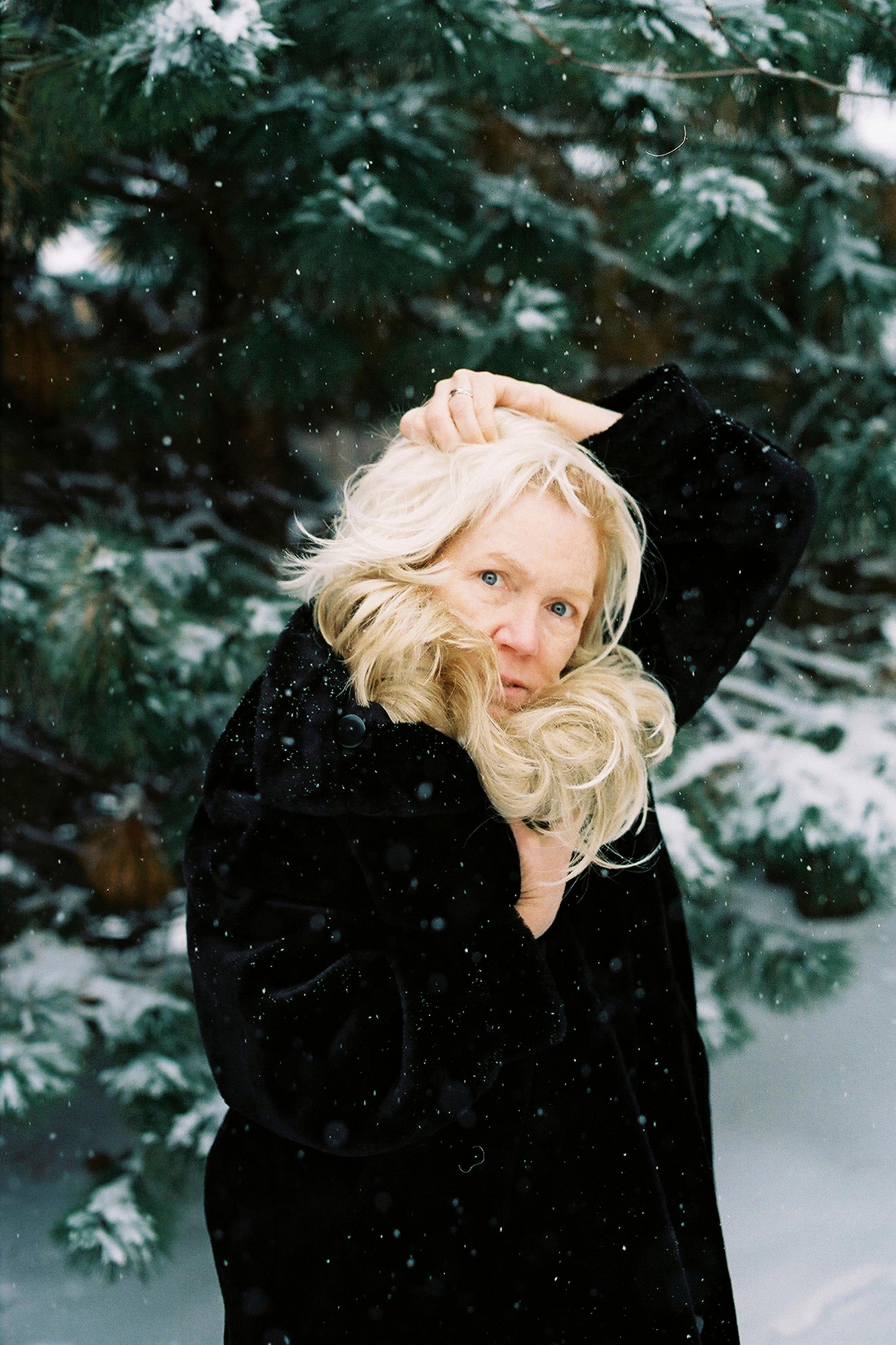
My mom and I have learned a lot about each other through our work together. This was one of the first images I made of her where I started to realize photography could deepen my relationship with her (and she could deepen my relationship with photography).
I made this impulsively, mostly as an excited reaction to the first snow that year. When I got the film developed I was suprised by how something as familiar as Mom could appear so unfamiliar, even vaguely menacing. It made me think a lot about intimacy, expectation, and representation.
Mommie’s Smile, circa 1980 From her latest book Mommie by Arlene Gottfried
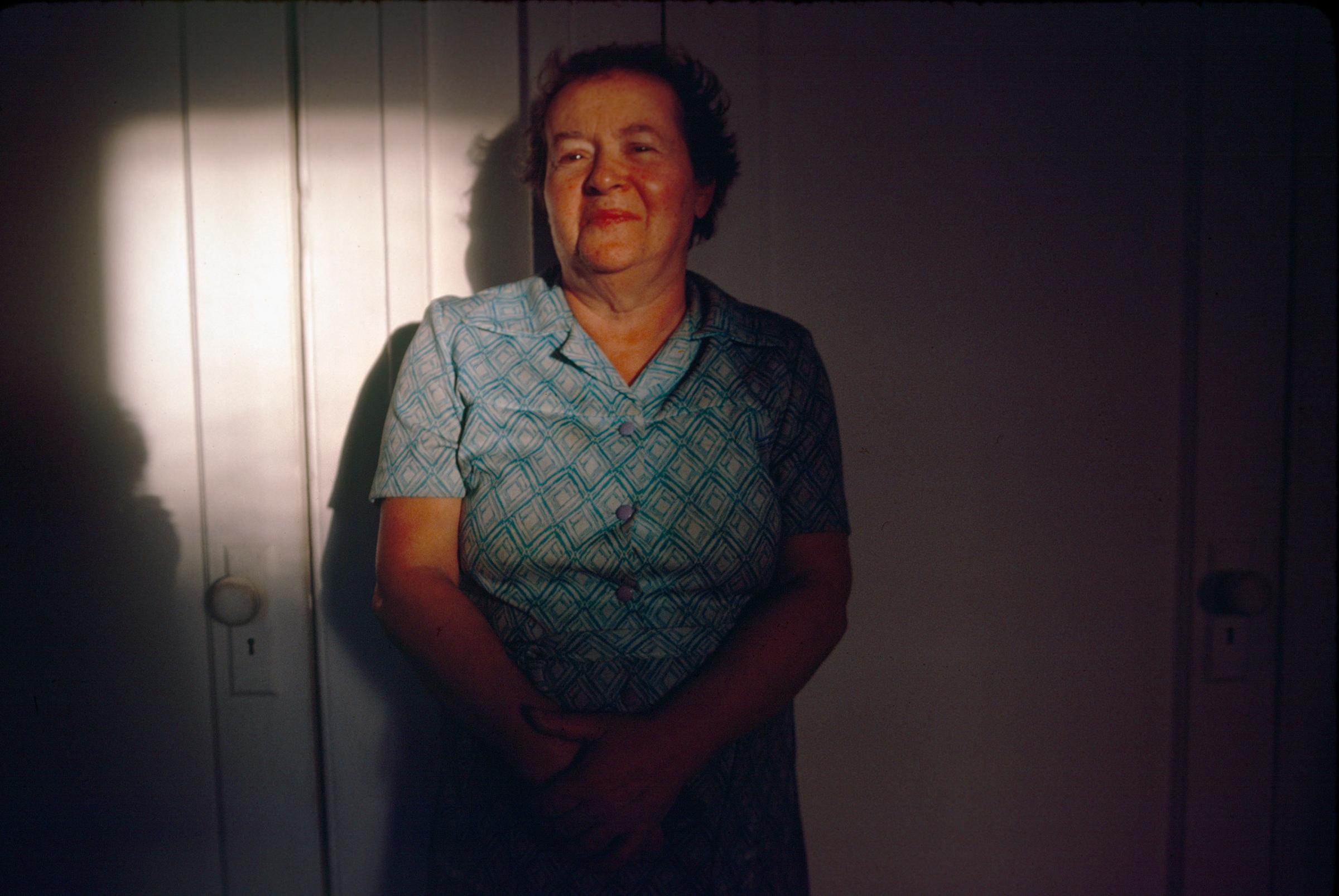
I began photographing my family as a way of documenting their aging and getting near the finality of life. I guess it was the only way I could cope with it and kind of hold on to her as much as I could at the time.
This photograph was taken when my mother was still able to be mobile and visit me in my walk up apartment. This picture of my mother means a lot to me because she looks healthier, happy and less stressed. Her expression also evokes the kindness of her heart.
Sleeping Beauty from the series Madje Has Dementia by Maggie Steber
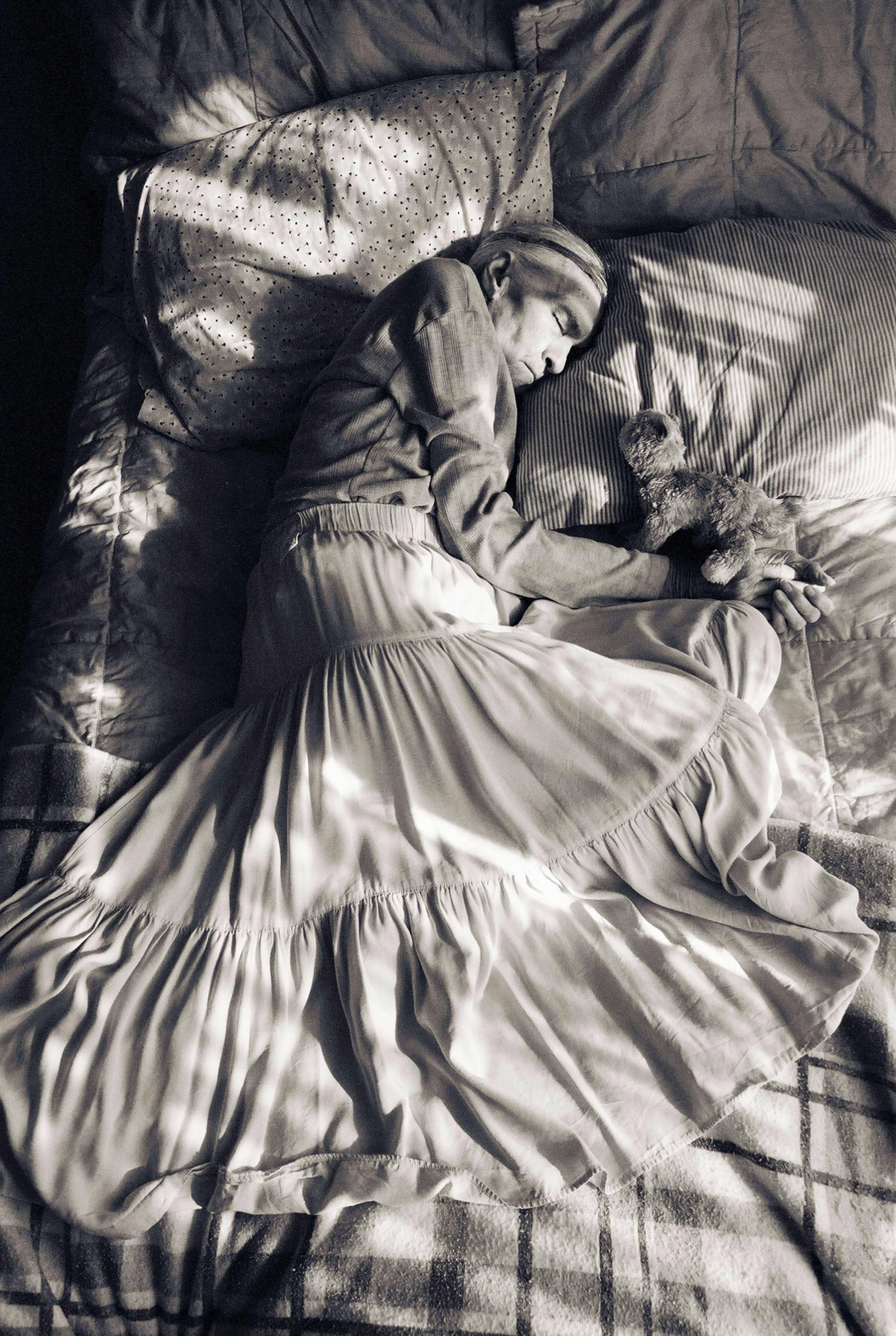
My mother, Madge Steber, takes an afternoon nap in her room at Midtown Manor in Hollywood, Fla., the assisted living facility where she resided for the last seven years of her life. Madje was a scientist and the only parent of the photographer who recorded her mother during the melancholic voyage of memory loss.
I love this photograph of my mother, it’s my favorite. She is so beautiful, so at peace. She was half-Cherokee and she looks it in this photograph. I spent to much time with my mother during these years, photographing her awake, asleep, during violent periods as well as periods of bliss. I couldn’t photograph enough because I felt and saw her slipping away from me everyday. I was forgotten but I was okay with it. I just didn’t want to forget her and I photographed all the time, sometimes just repeating what I had done because it was the only way I could ensure I had something after she was gone. This is why I love photographs. What else can show you what your mother looked like at the age of 20 when the moonlight fell on her face…..just so? It’s like that for me with this photo, I can see her beauty, her ancestry, and she is so at peace here, with the sunlight falling on her…..just so.
My Mother, Mystic Seaport, Connecticut, 1984 by Doug Dubois
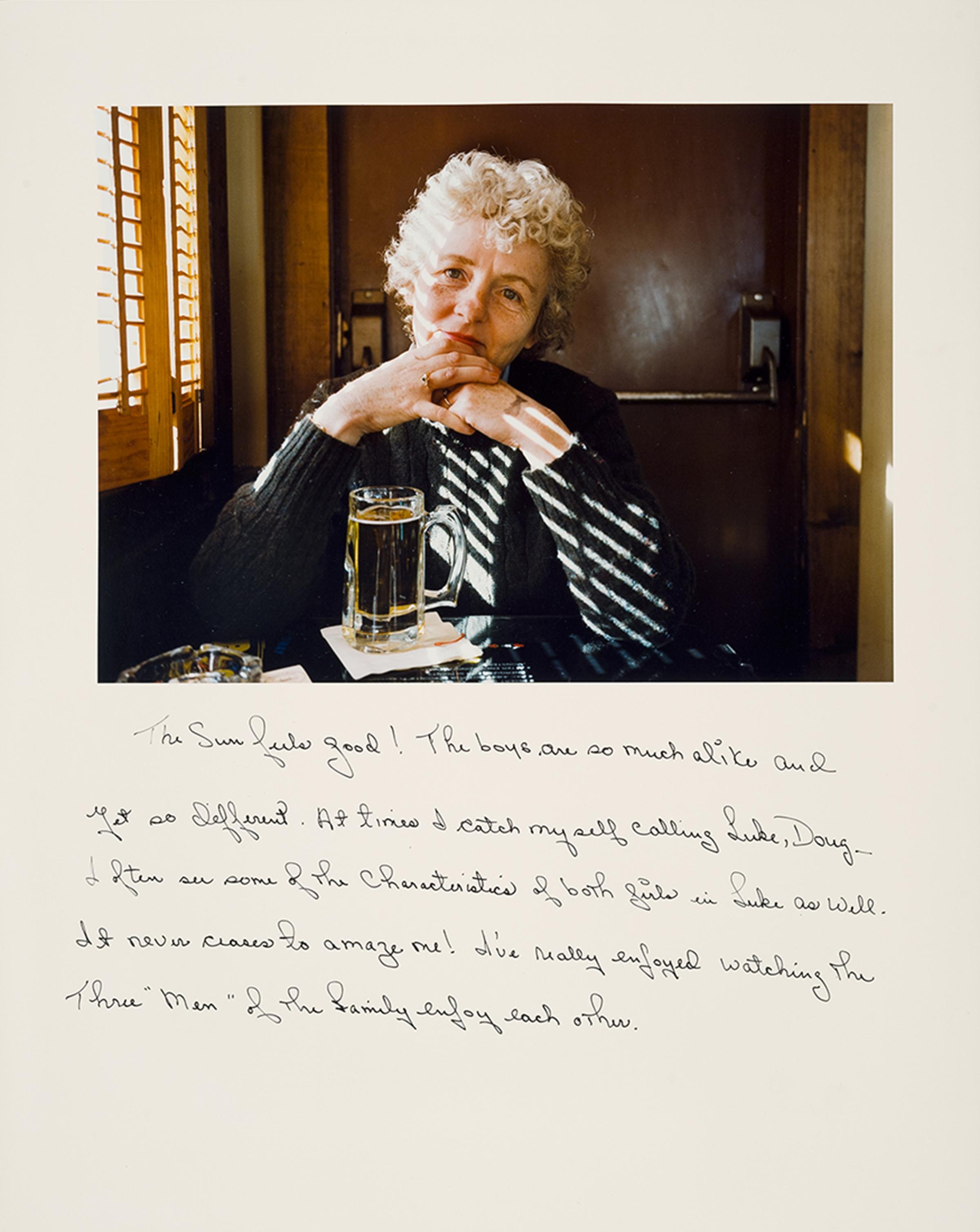
This photograph was made in 1984 when I was 23 and just out of college. At the time, I dismissed my mother’s writing as banal and sentimental but now, as a middle age man, it’s her lack of irony that I most envy and admire. My mother died two years ago just a few days before Mother’s Day. The date now passes without the panic of sending off a last minute gift or phone call. I miss that annoying obligation — it’s what keeps us alive and together.
Mom Smoking After Work, 2010. from the series You Have Nothing to Worry About by Melissa Spitz

When I first made this photograph in 2010, I was convinced my mother was no longer beautiful. Years of prescription pill and alcohol abuse had destroyed our relationship and my view of motherhood.
Six years later, I see this photograph as an example of my mother’s unflinching pride. She is confident in her own skin and proud of her decisions regardless of the outcome. This picture showed me that even through the dysfunction, she could still be fabulous and so could our relationship.”
Wedding Dress Fitting from the series My American Life by Gillian Laub
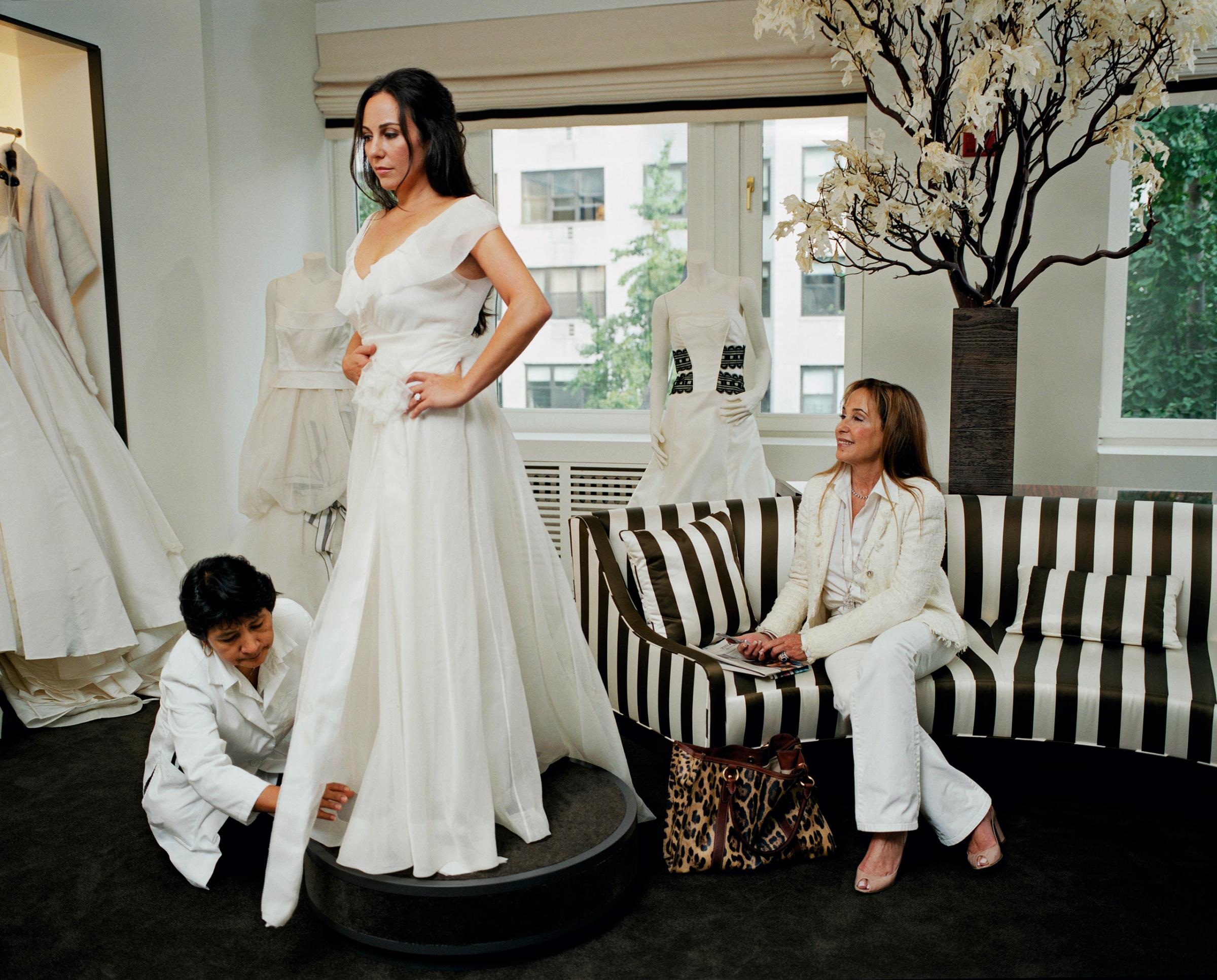
My mother was here with me while I got fitted for my wedding dress. I am never usually in my own photographs, but this moment felt particularly auspicious, so I wanted to document it, especially since I never thought I’d get married or have a traditional wedding. I remember my mom being very emotional and crying when I walked out of the dressing room. I have been photographing my family for several years: births, deaths, childhoods, aging, celebrations, are all part of this work. This is the second Mother’s Day without my grandmother, the matriarch of our family.
Mom In Her Garage 2014 from the series Majestic Palms Way by Molly Matalon
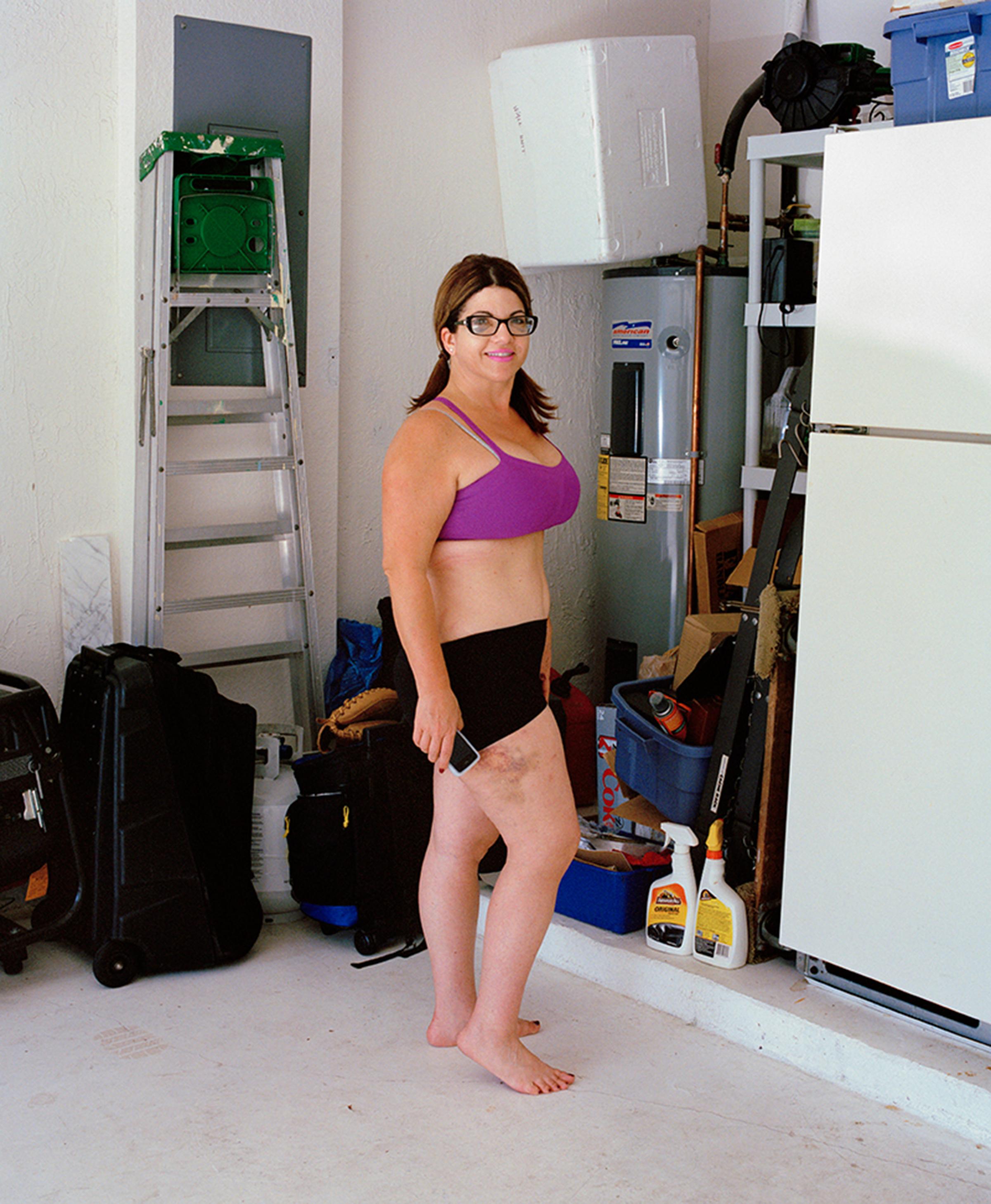
When I was growing up my mom would text me from the other side of the house to bring her a diet coke and when I was 13 years-old we started to go to Weight Watchers together. It seems obvious, or a rite of passage to be a woman and compare your body to your mother’s. This picture of my mom was taken during a time when I began to look at her as Gail instead of “Mom”. During these years of photographing Gail she started to get plastic surgery and I had started tattooing my body. This was so exciting and important to me that together we had been altering our bodies to feel more ourselves. I tried to explain this to her once and I’m not sure she understood what I meant but you know how moms can be.
Party Girl Mommy, 1995-2000 from the series Mommy by Robert Melee
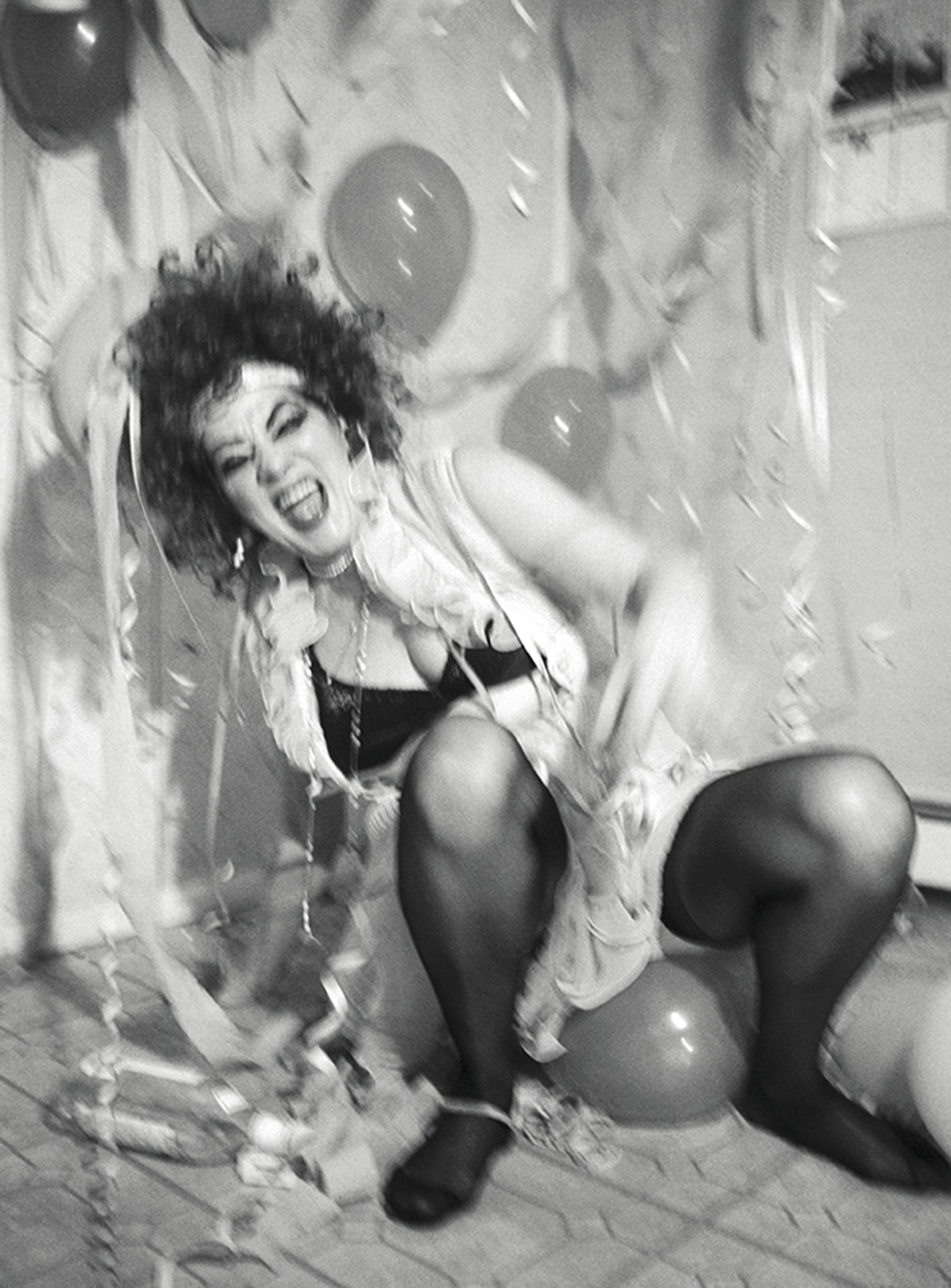
I took this series of photos of my mother because I was able to. My dad was a plumber. He was calm, content and an amazing provider. My mom was very restless. She would abandon her family and escape the suburbs for months or years at a time. My parents divorced when I was nine, then remarried several months later – to start Round Two.
As a child, my mother’s “breaks” were very difficult; but in my teens, I began to prefer the calm and quiet ambience of our home when she was gone. After high school, I attended the School of Visual Arts in New York City, where I began a strong visual dialog with domesticity. It was a conversation between painting and sculpture. I made artwork from fragments found in the household: plastic slip covers, appliance doors, imitation wood paneling, bottle caps. I then realized my next step was to work with the most important household figure – the mother. I wasn’t interested in mimicking Richard Billingham or Nan Goldin’s reportage approach and after our first shoot, I realized my mother was willing to do anything for me, so I ran with it. Temporarily putting aside painting and sculpture, I focused my creative energy on appropriating vintage snap shots and super 8 home movies shaped by memory; with props and humor. I eventually employed photographs as a component of my sculpture, using the same photo again and again, over exposing or under exposing it to create variations in hues like in painting.
During our sessions, my mother transformed, not only physically, but emotionally too. She became more confident and calm. I was able to dress my her up in ridiculous outfits, slap on an old wig, and i would apply piles of melting make-up to reproduce the woman I remembered in a mini dress, with far too much make up on and rotating hair colors and styles. She told me of her abusive upbringing and asked me to forgive her for repeating such bad behavior with my siblings and me. Later, she enjoy going to my gallery receptions and even performed live on stage with me several times.
We still have a turbulent relationship, but through the twelve years this series of photos was shot, my mother and I were closer than we ever were before or since. Looking back now, in part of her being so generous in front of my lens, I feel it was her way of making up for earlier days of abuse. It’s been a decade since I last took a photo of her, but to this day, she thanks me for having provided some of the best moments of her life.
Mom on her 59th birthday, 2014 from the series Cancer Family by Nancy Borowick

This photograph was taken on my mom’s 59th birthday. It was the first birthday that she celebrated without my dad, who passed away from pancreatic cancer a few months prior. They were married 34 years, and now she was on her own.
Undergoing treatment for breast cancer for the third time—like clockwork—she lost her hair and as a result hated being in public. It was her birthday and I was determined to make it memorable so I picked up neon-colored wigs and took her out to a pottery class.
We certainly stood out, but it was for all the right reasons, and that made her smile—and her smile was beautiful. My mom had a way of finding the joy and light when there was only darkness. To this day, I wonder what she wished for when she closed her eyes so tightly and blew the candle out.
India, 2014 from the series Sweet Life by Sohrab Hura
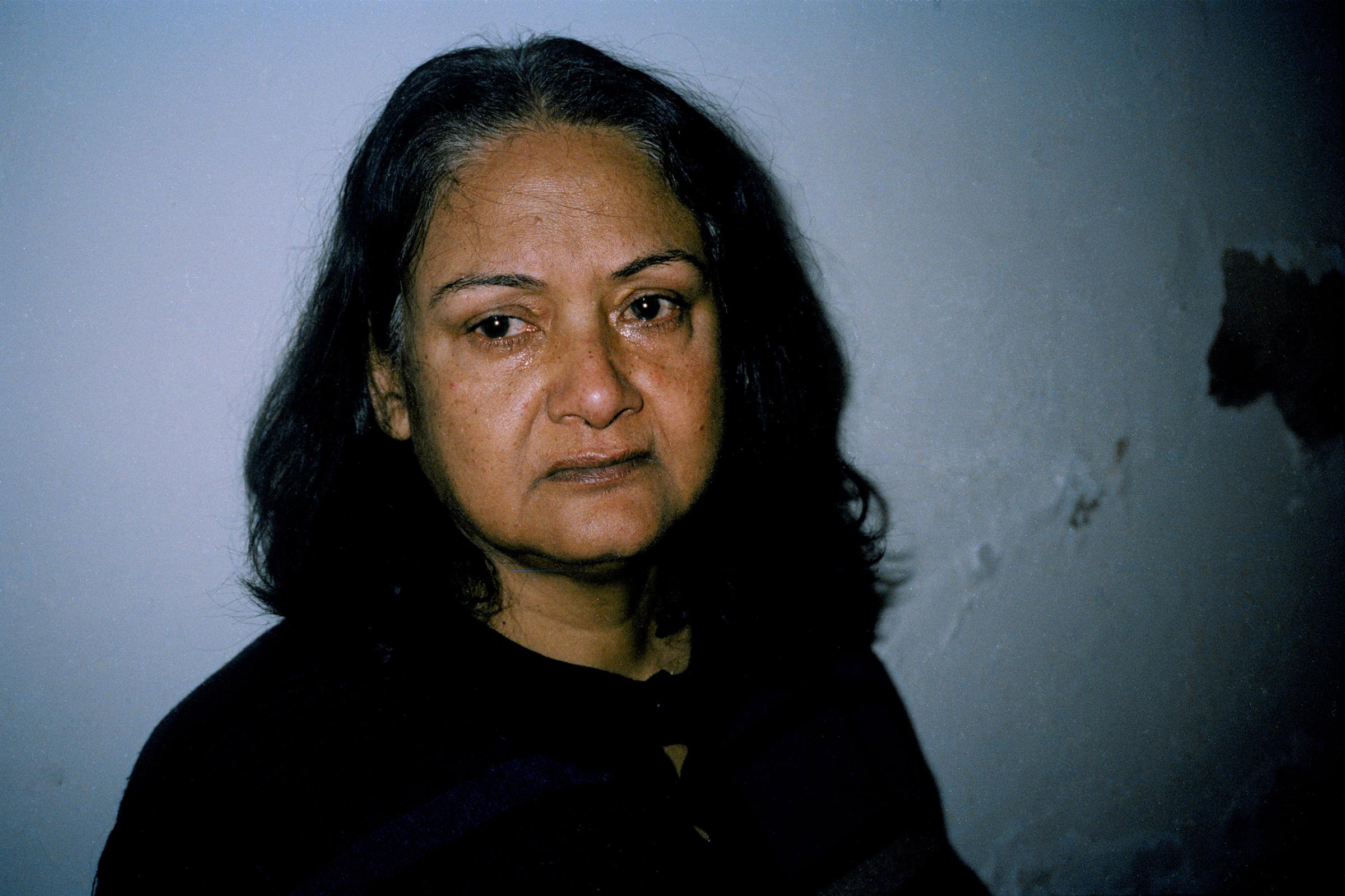
Elsa (our dog) had just died. She had been my mum’s companion for many years. I had photographed my mum for many years before this, perhaps in attempt to bridge a certain distance that existed between us. But this photo is precious to me because even though we didn’t say much to each other during that time it felt like there was something that we were able to share.
Paul Moakley is the Deputy Director of Photography and Visual Enterprise at TIME. Follow him on Twitter @paulmoakley.
More Must-Reads from TIME
- Donald Trump Is TIME's 2024 Person of the Year
- TIME’s Top 10 Photos of 2024
- Why Gen Z Is Drinking Less
- The Best Movies About Cooking
- Why Is Anxiety Worse at Night?
- A Head-to-Toe Guide to Treating Dry Skin
- Why Street Cats Are Taking Over Urban Neighborhoods
- Column: Jimmy Carter’s Global Legacy Was Moral Clarity
Contact us at letters@time.com